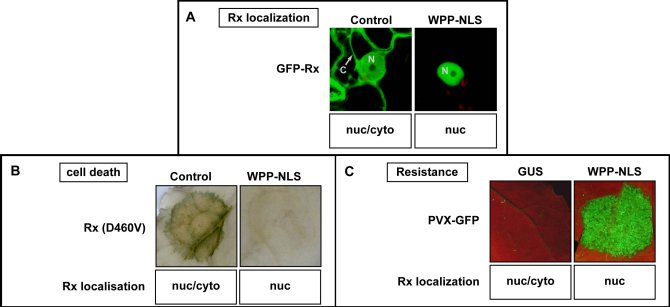Project
Resistance proteins and defense signaling in Solanaceous plants
We are interested in the molecular and biochemical mechanism by which Rx confers resistance to potato virus X (PVX) in Solanaceous plants. In collaboration with the department of Nematology of Wageningen University we found that a balanced distribution of Rx over the nucleus and cytoplasm is essential for its functioning. This is for example illustrated by the observation that hyper-accumulation of Rx in the nucleus abolishes resistance to PVX. The cellular distribution of Rx was studied by confocal microscopy and biochemical fractionation assays.

We also discovered that the interacting Ran GTPase-activating protein 2 (RanGAP2) acts as a docking platform for Rx in the cytoplasm and thereby helps to retain the proper subcellular distribution of this immune receptor within the cell. As expected, knock-down of RanGAP2 by virus-induced gene silencing (VIGS) also results in loss of resistance to PVX. We now want to understand how the subcellular distribution of Rx is regulated and what other proteins, besides RanGAP2, take part in the immune receptor complexes formed in the cytoplasm and nucleus. To achieve this, we perform confocal microscopy, immuno-precipitations and yeast two-hybrid assays. To confirm the role of the newly identified Rx-interactors in the defence signalling cascade, the encoding gene will be knocked-down in plants by VIGS and subsequently tested for resistance to PVX. Additional studies will be performed to discover how these proteins molecularly act in the defence signal transduction cascade leading to virus resistance. This should lead to a better understanding how NB-LRR immune receptors function in the innate immune system of plants that protect them from invading pathogens.